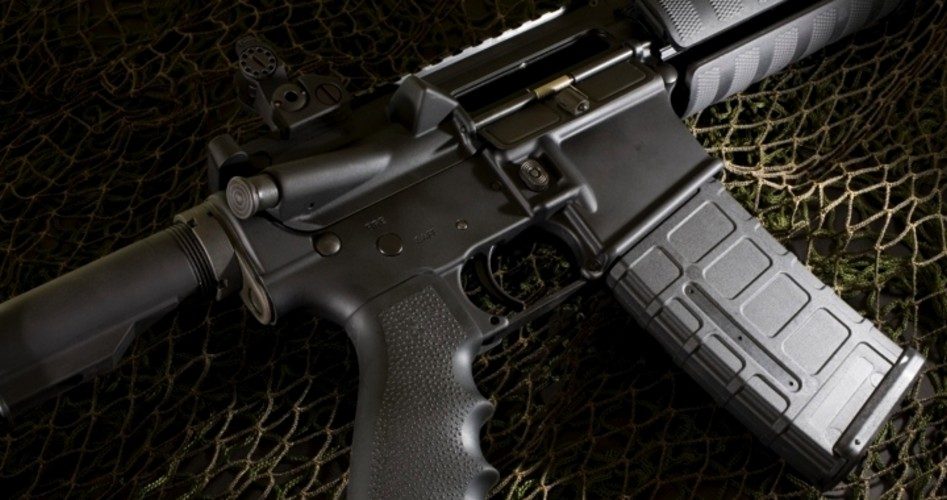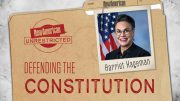
On Monday a three-judge panel of the Second Circuit U.S. Court of Appeals ruled unanimously that bans on possession of “assault weapons” by New York and Connecticut did not infringe on rights of citizens in those states guaranteed under the Second Amendment.
According to Tom King, the president of the New York State Rifle & Pistol Association, one of the numerous plaintiffs bringing the complaint, the decision was expected, was no surprise, and will be appealed: “This is just one step in a longer journey.”
According to Judge José Cabranes, writing for the three-judge panel, the states’ interest in public safety overrode concerns over infringements of individual rights, calling those interests “important — indeed, compelling — … in controlling crime.”
In addition, according to Cabranes, how a weapon looks — its features — was also important in his decision to uphold the ban. And reiterating the common but inaccurate conclusion that mass shootings are on the increase merely added to the judges’ reasons for infringing upon individual rights. Those weapons, because of those features, “tend to result in more numerous wounds, more serious wounds, and more victims. These weapons are disproportionately used in crime, and particularly in criminal mass shootings.”
The abrogation of precious rights in the ruling were heralded as a victory by both New York Governor Andrew Cuomo, his state’s attorney general, Eric Schneiderman, and Connecticut’s Attorney General George Jepsen. Jepsen praised Cabranes’ ruling:
At a time when many Americans have abandoned hope of government’s ability to address gun violence in our schools and on our streets, Connecticut’s laws — and today’s decision — demonstrate that willing states can enact meaningful reform to improve public safety without violating the Second Amendment.
Cabranes tossed aside plaintiffs’ arguments that the bans wouldn’t have kept Adam Lanza from massacring 26 children and their teachers at the Sandy Hook Elementary School in December 2012, or arguments that such mass shootings are rare events that would not be impacted by such restrictions, writing that “That may be so, but gun-control legislation need not strike at all evils at the same time [in order] to be constitutional.”
Translation: Any excuse will be sufficient in overriding precious rights while calling it constitutional.
This is the thinking of a judge who has belonged to the elite establishment for so long that his critical thinking skills have been compromised in order to come to this conclusion. With a law degree from Yale, he has had for decades a tight relationship with the establishment. He was appointed to be Yale’s first general counsel in 1975 by Yale’s President Kingman Brewster, served as a consultant to Secretary of State Cyrus Vance, and elected a member of the insider group the Council on Foreign Relations. He was appointed by President Jimmy Carter to the President’s Commission on Mental Health and was considered by President Bill Clinton for appointment to the Supreme Court, a position that ultimately went to far-left Justice Ruth Bader Ginsburg.
Cabranes was impressed with each state’s ban that was partly based upon the appearance of a semi-automatic rifle. In New York’s ban, the definition of “assault weapon” was expanded to include any feature enhancing the appearance of an ordinary rifle, “including a telescoping stock, a conspicuously protruding pistol grip, a thumbhole stock, a bayonet mount, a flash suppressor, a barrel shroud, [or] a grenade launcher.” Connecticut’s ban was nearly identical, defining an ordinary rifle as an “assault weapon” if it included “a telescoping stock, a thumbhole stock, a forward pistol grip, a flash suppressor, a grenade launcher, and a threaded barrel capable of accepting a flash suppressor or silencer.”
How these features turned an ordinary citizen’s semi-automatic rifle into a supposedly vastly more dangerous “assault weapon” was missing from the judge’s 57-page ruling.
Also missing was any reference to a just-released U.S. government study by the Congressional Research Service (CRS) which showed conclusively that mass shootings, despite the hype and howling by the press to the contrary, continue to be rare events in the United States. James Alan Fox of Northeastern University, whose analysis is covered at length in the study, says that “there is no solid trend” in the number of such crimes, adding that “No matter how you slice it, there’s no epidemic.”
According to the CRS study, as reported by the NRA’s Institute for Legislative Action:
[Seventy-one] percent of mass shootings and 79 percent of their fatal victims over the 15-year period 1999-2013 were family- or felony-related. Public incidents, while accounting for the vast majority of mass shootings covered by the news media, accounted for only 21 percent of such incidents and 29 percent of their victims.
Added the NRA:
Anti-gun groups and their allies in the news media portray mass shootings as common events that place the public at extreme risk. However, between 1999 and 2013, mass shootings covered by the CRS study accounted for a microscopic 0.004 percent of all deaths, about 0.66 percent of all murder victims, and less than one fiftieth the number of non-firearm murder victims in the United States. Stated another way, during the same 15-year period, the chance against a person being killed in a mass shooting in the United States was about 517,000:1.
Finally, the CRS concluded that, between 1999 and 2013, less than 10 percent of mass shootings were committed with any firearm capable of using a detachable magazine holding more than 10 rounds.
In the continuing long war against guns, however, facts don’t count, or are conveniently ignored by liberal judges with an agenda, such as Judge José Cabranes.
The ruling, along with a similarly flawed ruling in the Highland Park, Illinois case, will be appealed to the Supreme Court where, it is hoped, brighter minds with fewer agendas will rule constitutionally: that an infringement is an infringement, no matter how it is dressed up to appear otherwise.
A graduate of an Ivy League school and a former investment advisor, Bob is a regular contributor to The New American magazine and blogs frequently at www.LightFromTheRight.com, primarily on economics and politics. He can be reached at [email protected]



